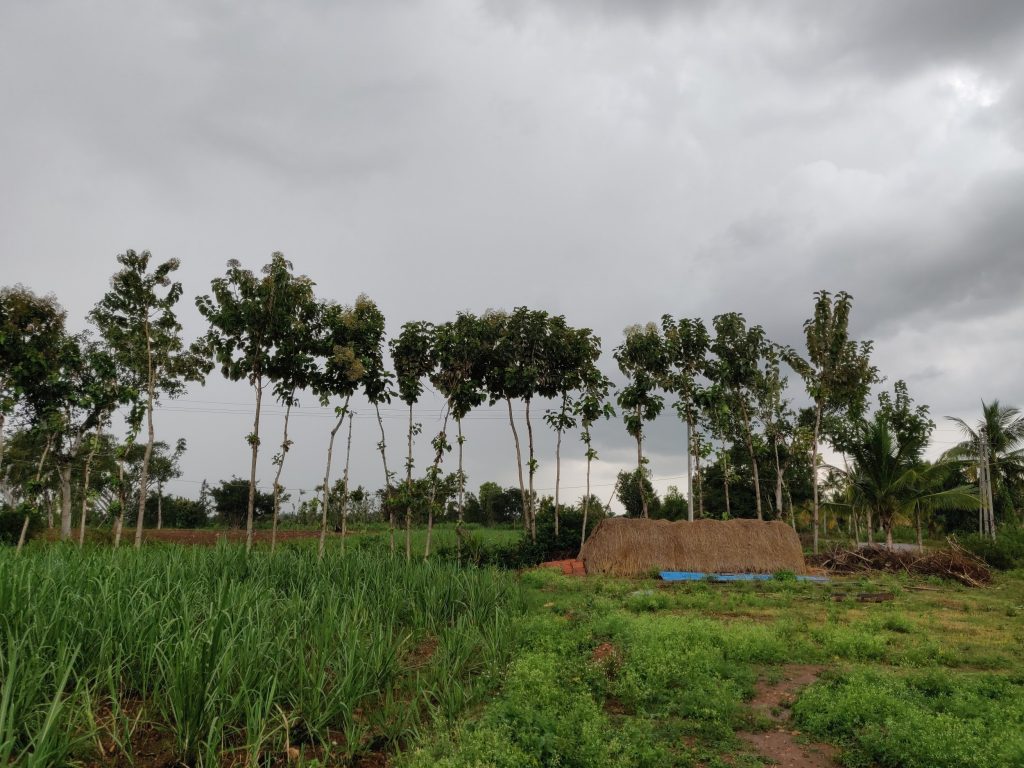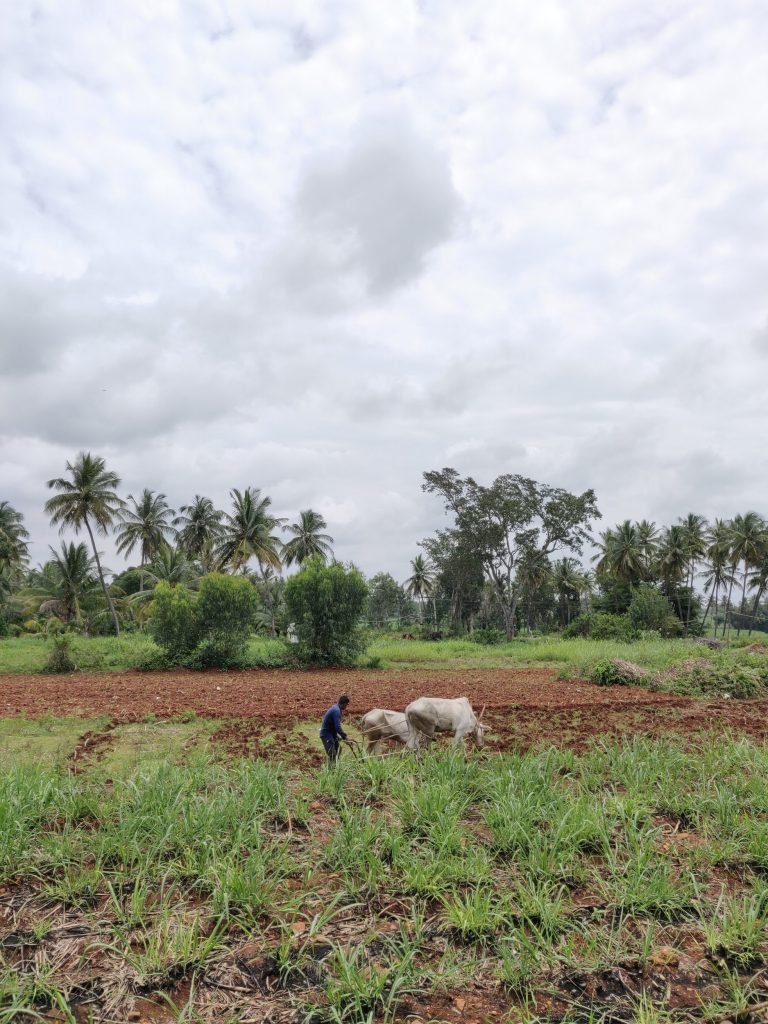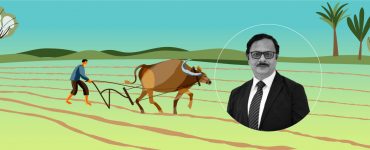Intro:
Prerak Mehta is a Creative Lead at Dalberg Design, where he leads engagements with a wide range of private and public sector clients including national and regional government agencies, Mastercard Foundation, The Bill and Melinda Gates Foundation, USAID, Omidyar Network India, among others. His expertise lies in understanding deep user needs, attitudes and behaviors, and quickly building prototypes with a high emotional quotient that can be tested in the real world. His design work has been published in top design research journals, and he often collaborates with social enterprises to provide inputs on their strategy and guidance on setting up HCD centered processes. He is an Acumen fellow, Aspen institute scholar, has a B.Tech in Computer Engineering and a Master’s degree in Design from IIT Bombay.
“We want to plant tomato, bean, gourd but we weren’t able to plant it because we didn’t get the seeds due to the Covid-19 crisis. This season is also a little unpredictable, it’s raining, there’s hail, so the produce is getting affected.”
Deepa is a 39-year-old female farmer and construction laborer who stays with her husband and children in a rural area in Jharkhand, India. She estimates that it will take her family four months to recover from the financial losses that they have suffered. In the future, she plans to purchase seeds by selling some of the stocked-up food grains or by borrowing money from friends.
2020 has been an unpredictable year. The world is facing an unprecedented crisis as a culmination of challenges related to the Covid-19 pandemic, climate change, increasing unemployment and rising poverty. It is evident that people’s lifestyles and behaviors are changing rapidly, and the crisis has impacted their financial health, livelihoods and psychosocial support, to name a few. These challenges are further magnified for the low-and-middle-income people in emerging economies.

Most professions are facing the brunt, especially one of the oldest in the world – farming – needs urgent attention. Agricultural supply chains have been disrupted, crop prices have been fluctuating, finances available to farmers have thinned, safety nets have vanished, and the ability to sustain crop cycle shocks has become negligible. The need for technology to play a prominent role in agriculture has never been more evident. Access to and knowledge of technology for farmers can help democratize learning for best agricultural practices, open up new avenues for financing, improve crop yields and pest management, increase awareness of price fluctuations, and enhance connectivity to markets, among other benefits.
A farmer with no mobile phone access is still a farmer. A farmer with mobile phone access is a farmer well connected with his friends, extended family and local suppliers. A farmer with a mobile phone and internet access is a farmer well connected to the world.
“WhatsApp is a faster and more convenient way to communicate. It’s much better than a mere call. For example, if you have a problem with your crops, you can take a picture and send it directly so that other farmers or experts can see and give advice accordingly.”
Richard is a 34-year-old male farmer who stays in a rural area in Makueni County, Kenya. Due to restricted social meetings because of the Covid-19 crisis, Richard’s ability to learn from other farmers and problem solve with agri-extension officers in-person has reduced. He believes that adults learn by seeing and if a mobile-based service provided videos and chat-based support to farmers in the local language, it would help fill the gap4.

The focus of our work at Dalberg Design has always been on the individuals and communities we serve, and we have often been part of successful user-centred technology-based initiatives in the agriculture sector.
We recently collaborated on a digital technology platform and services initiative in agriculture, with a large mobile network provider, a sustainable media social enterprise, a digital technology start-up and a global non-governmental, humanitarian aid organization in East Africa. We designed rich media-based remote agricultural advisory services, emergency pest and insect control services, weather alerts, among others. These services were to be delivered through WhatsApp for Business and USSD platform, and adaptable to other media channels like TV and radio for both farmers and agriculture extension officers. We leveraged past work in the sector, conducted remote human-centered design (HCD) interviews with farmers and agriculture extension officers, rapidly developed and tested mobile prototypes including chatbots, and provided a roadmap to implementation and pilot launch.
On another front, we collaborated with a social enterprise focused on low-cost technology solutions and end-to-end services for small farmers in India. We helped co-design an ultra-low-cost greenhouse which will enable smallholder farmers to receive higher crop yields through the year and build more resilience to fluctuating market prices. We leveraged existing best practices, past work by the social enterprise, remote human-centered design (HCD) interviews with farmers, user personas, technical inputs from experts; and planned rapid, low-cost testing for the physical prototypes.
“If I can get higher yields, grow crops through the year, get protection from untimely rains and extreme sun with a greenhouse, then I am willing to take a loan and cultivate greenhouse vegetables even on half an acre.”
Sariamma is a 38-year-old female smallholder farmer who stays with her children, husband and extended family in rural Telangana, India. She is eager to try out new farming techniques to improve her livelihood. She has school-going children who help the family in small farming chores. She is affected by fluctuating market prices due to Covid-19 crisis and unpredictable weather that has reduced her annual income by up to half. She regularly discusses issues with her husband and makes joint decisions with him.

Our learnings from long-standing work at the intersection of agriculture, technology, and human-centered design (HCD) has helped us piece together best practices for innovations in this space:
- Make the navigation as simple as possible, to not intimidate or deter farmers from an unfamiliar digital service
– Break each navigation task into small steps so that farmers are not overwhelmed
– Use different font styles and big font size to indicate when an action is required from the farmer
– Use numbers for menu-driven responses instead of text to minimise the chance of user errors and the effort required from users
– Break-up any information into short, digestible bullet points
- Build farmers’ trust and familiarity in the digital service, and the information provided
– Add a visible logo to the introductory message, so it appears ‘official.’
– Use regional language in your interface to make it feel familiar and overcome language barriers
– If using a chatbot, have a conversational and professional tone and refer to the chatbot as an ‘expert.’
– Indicate to the farmer when switching between a chatbot and a human response
– Where feasible, connect farmers on your digital service through chat groups, to build social capital and companionship in the service
- Provide farmers with an incentive to report any data back to you
– When crowdsourcing data from farmers, have a small and clear ask
– Emphasize that farmers will be helping others by sending this data
- Minimize farmers’ concerns about hidden charges and costs
– Paying for technology-based services are often a new experience for many farmers, avoid any hidden fees and emphasize that in your messaging
- Make farmers your co-designers, especially for product innovations
– Use participatory research methods to engage farmers early on in your product design process, going beyond the usual feedback loops and treating them as your core design team members
– Understand the farmers’ local ecosystems and thought partner with farmers about product sustainability and long-term maintenance
6. Build solutions that account for farmers’ core needs, aspirations, behaviors and cultural beliefs
– Farmers, like any other consumer, like to have desirable products which not only solve for their challenges but tap into their aspirations and take into consideration their belief systems
– Leverage mixed-methods approach like human-centered design (HCD), short surveys, rapid prototype testing loops, among others to iterate and achieve a product which ‘wows’ the farmer
7. Test willingness to pay early on, before making substantial investments
– Conduct willingness to pay tests early on in the design and development process, much before the design is finalized or technology integration completed
– Use low-fidelity prototypes like product flyers, mobile wireframes, rough sketches, photo and video references, among others
Challenges emerging from the Covid-19 pandemic along with the accelerating climate change crisis has provided us with a unique opportunity to leverage technology-based solutions rooted in HCD to fast-track disruptive innovation in the agriculture sector. Designs which are scalable at low-cost, sustainable, desirable and affordable by farmers in emerging economies have the potential to catalyze the agricultural space into an ag-tech revolution.
Dalberg Design is a global practice dedicated to social impact, with studios in Dakar, London, Mumbai, Nairobi and New York. We sit within a broader firm with deep expertise in the development and strong relationships with government institutions. Our design teams have spent the last few years working at the intersection of agriculture, technology and human-centred design (HCD) with philanthropic foundations, governments, financial institutions, mobile network operators, social enterprises and start-ups, in multiple countries across Africa and Asia.
“We don’t know much about new technology but are open to using it. Our plants can’t talk to us, but we need to take care of them.”
A smallholder farmer anywhere in the world, if you are willing to meet them where they are and co-design solutions.
This article was first published in The SatSure Newsletter (TSNL)





Add comment